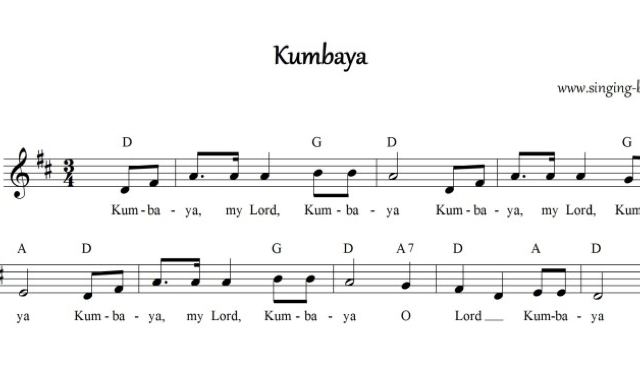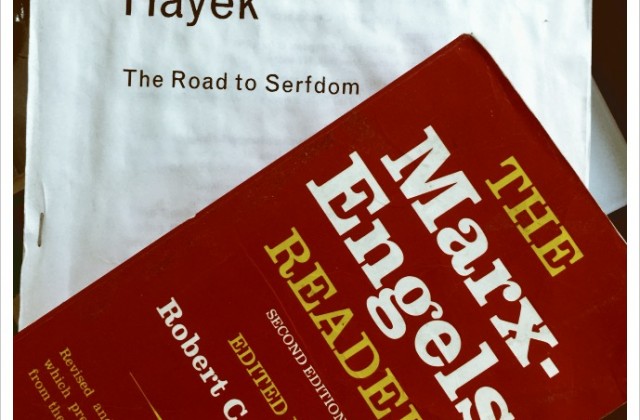Hello, It’s Me: Call the Mayor About HALA
1982 called, and it was the Mayor. He said he wants you to call him back about something called HALA? I saved the message.
Bargain and HALA are Not the Same!: More Detail on Problems with the Bargain
As I said yesterday, most people aren’t getting the distinction between the Grand Bargain and the recommendations of the Mayor’s Housing Affordability and Livability Agenda (HALA) Committee. The Bargain is one of 65 recommendations and involves upzones in exchange for a mandate to provide a set percent of rent restricted housing. I have described the HALA recommendations as like an old erector set: lots of pieces, but they don’t turn into anything unless they’re put together. The Bargain is infeasible. One can be hopeful that we can assemble the 64 recommendations in a way that will provide some lasting price stability and sustainable growth while also being skeptical about the Bargain. Here’s a serious of Facebook comments that highlights more about why the Bargain may not work. It kicks off with a question about the numbers, and what follows is a rundown by David Neiman about why we’re skeptical.
You could post calculations from the different scenarios, presumably. Something that would justify this attack on the Grand Bargain. I don’t want to see LR builders treated differently than MF builders but it’s hard to take this seriously without the proformas to show the unfairness.
Neiman then responds in several different comments that I’ve quoted verbatim as paragraphs.
I was part of a group of LR builders, developers, architects that all ran pro-forma analysis for LR1/LR2/LR3 based on the FAR bonus & inclusion requirement published. We all used our own methodology & model, but all came to the same conclusion, which is that the value of the bonus & the cost of the mandate do not balance in the LR zones.
This really shouldn’t be a surprise because you can see the problem by inspection. In most zones, an FAR bonus of about 20-25% is paired with an inclusion requirement of 5%-7%. In the lowrise zones, the same inclusion requirement applies, but the FAR boost is 8%-10%.
The problem is not un-fixable, but the fact that the city started with bad math out of the gate is a concern. It is not hard to see the scenario unfold where the bad math becomes draft legislation, which sets the bar from which people begin negotiating, and it becomes politically impossible to get the FAR boost and the inclusion requirement to a place where they are balanced & fair as is the intent of the grand bargain.
The fact is that we don’t know much about how Mandatory Inclusionary Zoning (MIZ) will work in any zone. But what we do know is that most projects even under current rules are often not able to build out to the existing FAR capacity they have. Nieman points this out.
One big caveat: It one thing to grant greater FAR. Its another thing to allow it to be used. Current LR development standards make are full of a ton of restrictions that make it hard for developers to use their full development potential. Absent a serious attempt to peel back some of the handcuffs inherent in the LR zoning code, many sites will have trouble using the extra FAR.
Again, it’s ok to question the Bargain including who supports it an why, will it work, and is it the best way of accomplishing the stated goal of 6000 units of housing in 10 years. Asking these questions doesn’t make you a doubter or a spoiler: it makes you someone who wants to be sure what comes out at the end works.
Grand Bargain: Neighborhoods Are Figuring It Out
When the Grand Bargain was first announced I actually embraced it –well, sort of. My rationale was that the cash and exactions squeezed from builders could be offset by the additional housing capacity; also I thought, maybe, neighborhoods outrage at upzones would be effectively neutralized by the fact that the upzones would come with rent restricted housing. My thought then is that, politically anyway, City Councilmembers would be able to ignore neighbors by playing the social justice and equity card: the upzones would improve social justice and equality (whatever those things mean.) However, as I also pointed out, why would neighborhoods support the upzones that are part of the Bargain when they’ve always been against upzones? The truth is that the neighborhood vitriol is just getting warmed up and unless the City Council finds the nerve it didn’t have for small-lot and microhousing legislation, the Bargain seems in trouble,
For example, here’s what the angry neighbors in Wallingford are saying about HALA and the Bargain:
Mayor Murray’s “Grand Bargain” within the HALA panel of developers and advocacy organizations would:
Change all single-family zoning within Urban Villages to multi-family zoning
Change multi-family zoning to favor apartments and condos over town home
Greatly increase the allowed heights and size in multi-family zones (from 3 to 4 or 5 stories) and in commercial zones (from 4 to 5 or 6 stories
Push out locally-owned small businesses that cannot afford the higher rents in new mid-rise mixed-use building
Accelerate demolition of existing affordable housing by creating new incentives for developers and raising taxes on properties that are not redeveloped
Replace affordable housing with top-dollar houses and apartments, with only 5 to 7% of new units reserved as affordable
Create new legal loopholes for developers
Make these changes despite City studies confirming that existing zoning is adequate for predicted future population growth
What I predicted is happening. Far from embracing the Grand Bargain, neighbors are calling it a “loophole” and mischaracterizing the intent of mandatory inclusionary zoning as creating, “top-dollar houses and apartments, with only 5 to 7% of new units reserved as affordable.” This language is right out of the same play book that neighbors have used for every effort to create more housing capacity, but when builders try to build what is already allowed.
It is important that I restate again what we are for: more housing of all types, everywhere in the city, for all levels of income. We are highly skeptical of whether the Grand Bargain scheme will actually work. Our early work shows that it won’t and even if it does, will only work in limited ways and will raise overall housing prices. We are not against the upzone aspect of the Grand Bargain. We think that the upzones all by themselves along with reducing other costly regulations would help lower prices by increasing supply. Also, there are good programs like the Multifamily Tax Exemption (MFTE) and the Housing Levy that more efficiently create needed subsidized housing.
I point out neighborhood opposition to highlight the studies naivete of the Mayor, City staff and the City Council who seem to be living in two, parallel worlds: one world where somehow Mandatory Inclusionary Zoning will make EVERYONE happy and reality. It’s going to be a rude awaking from the dreamworld where neighbors embrace bigger buildings just because they have a few units of rent restricted housing and builders can actually make those buildings work.
Call to Action: Please Answer Our Questions About the Grand Bargain
Greetings and Happy New Year!
It’s been awhile since I asked you to write emails and attend an event. We just found out this last week about an event being hosted by the Mayor to promote the recommendations of his Housing Affordability and Livability Agenda (HALA) Committee. One of these recommendations (out of 65) is a mandate to require that a percentage of all new housing build outside Downtown and South Lake Union include rent restricted units in exchange for upzones. Our preliminary calculations indicate that this proposal is infeasible; added construction costs combined with lost rent revenue mean that many projects won’t pencil. The proposal is called Mandatory Inclusionary Zoning (MIZ)
————————-
Dear Mayor Murray and Councilmembers,
People who build housing outside of Downtown and South Lake Union are very concerned about the elements of the Grand Bargain. Everyone recognizes the need to work together to address housing issues in our city, but the proposals in the Bargain seem quite complicated and, in the view of many developers and builders, will make many new housing projects financially infeasible. We want to be a partner with you and the City as you consider how and whether to implement the Grand Bargain. The additional costs created by Mandatory Inclusionary Zoning are likely to drive up the price of housing overall and adversely impact housing supply by making projects financially infeasible.
We have submitted 10 questions about the Grand Bargain to City staff and have yet to hear back in writing from them. Our questions are substantive and even technical. Can the Bargain effectively create more housing choices and options for people all over the city? Right now it’s hard to tell. Here is a link to the questions we’ve asked: http://www.seattleforgrowth.org/grand-bargain-10-questions-mayor-city-council-city-attorney/
While we were not signers of the Grand Bargain, and we’re skeptical about Mandatory Inclusionary Zoning, the builder and developer community that creates the majority of housing (single-family, townhomes, small apartments, multifamily housing) in Seattle wants to be supportive of ideas that work.
We urge you to direct staff to work with Smart Growth Seattle and the wider builder and developer community on how we can efficiently and effectively address housing issues in our city.
Sincerely,
Reading List: What to Read About Housing, Economics, and Planning
The other day on Facebook someone asked what books I would recommend in the fields of housing, economics, and urban planning. I came up with a quick answer that I decided to turn into a blog post. I picked one book in each category, except for economics where I picked two. This is edited from the original post in City Builders. The post has been edited from the actual comment on Facebook.
————————————-
You asked for book recommendations about housing, economics, urban planning. I highly recommend avoiding urban planning. What you don’t know CAN hurt you (when derisively asked “Do you have a planning degree?” by Department of Planning and Development counsel during an appeal, I answered, “No. Thank God!” Everyone laughed. Point scored).
However, how about one book in each area?
Housing
Cathedral: The Story of Its Construction (1981)
By David Macaulay,
Some people talk about housing, some people build it (the talkers are “urbanists”), and this story told in pictures beautifully illustrates the construction of a medieval cathedral. But it might was well be four town houses in Ballard. I have a copy of all of Macaulay’s books somewhere. What was compelling about the book for me growing up was the detail of all the work that went into planning and building a cathedral including the politics and lack of resources. I was amazed by how long it took to build a project. Macaulay has similarly insightful books on the pyramids of Egypt, cities, and other structures.
Economics
The Marx Engels Reader
Edited by Robert Tucker
The Road to Serfdom
By F.A. Hayek
Two books you have to read here. I have a copy of the Marx Engels Reader but you can’t have it. It sits on by bedside table because I often read it and it also makes me feel better. It was the copy I used for my college Marxism class. If you want to understand capitalism (not be a cry baby about it) Marx has the best description of it in Das Kapital or Capital, the English title. Unfortunately capitalism is the state of affairs of human nature, not a system. Marx is a hero of mine and a great writer. While I reject his prescription for solving the “problem” of capitalism, his descriptions of capitalism and labor are brilliant if you can factor out his moral outrage and indigence about how the world works.
You also have to read the Road to Serfdom as the narrative version on the other side of Marx. In it Hayek makes a VERY compelling case that planning leads to loss of freedom and totalitarianism. He is not a libertarian, but rather, I’d argue, an profound optimist in the human ability to naturally and intuitively solve problems if allowed, in a structured system of laws, to be themselves.
It’s called spontaneous order. And you see it in this video clip; it FREAKS planners out.
Urban Planning
The Image of the City
By Kevin Lynch,
The book and writer that made me fall for planning. It was a long romance that faded over time. But Lynch beautifully described cities as legible; cities are like books, they can be read. And more than that,
A vivid and integrated physical setting, capable of producing a sharp image, plays a social role as well. It can furnish the raw material for the symbols and collective memories of group com- munication. A striking landscape is the skeleton upon which many primitive races erect their socially important myths. Common memories of the “home town” were often the first and easiest point of contact between lonely soldiers during the war.
The wrong message, and I think Lynch and I would argue about this, is that those myths ought to be “saved” at all costs, as if the myth was the building or street. It’s not. The myth, the narrative to be read, is us, the people. So whether it’s Cathedral Sanctae Mariae Floris or a discarded can of Olde English, WE, not the damn buildings are the myth and the story.
Check out my post about Lynch’s day with a cab driver.






